Review for Sammy Going South
FILLING THE CINEMASCOPE SCREEN WITH
FIVE THOUSAND MILES OF INCREDIBLE ADVENTURE!
Filmed over six months from May to November, 1962, on picturesque locations in Africa and at Shepperton Studios, England, Sammy Going South is a truly remarkable and wonderfully acted film directed with consummate skill by Alexander Mackendrick. Chosen as The Royal Performance Film of 1963, the film covers a five months period from November, 1956 to March, 1957. Ten years old English boy and only child Sammy Hartland (Fergus McClelland) lives in an apartment block in Port Said with his English parents. It is the start of hostilities in the Suez crisis and Sammy is out playing at the docks when the RAF launch the first bombing raid on Port Said. Terrified, Sammy runs home to find that his parents, along with some Egyptians, have been killed when a bomb hit the apartment block.
The Egyptians he believed were his closest friends turn on him because he is English and, lucky to escape being killed by them, he runs away, heartbroken; penniless; traumatised and completely alone. He knows that he has an Aunt Jane, his mother's sister, who runs a hotel in Durban, South Africa and so, with only a toy compass to guide him and the irrepressible optimism of a ten year old, he starts his journey south on foot to travel to Durban, five thousand miles away at the other end of the African continent. The adventures he has and the people he meets en route form the story.
On his first night out, he is found sleeping on a sand dune in the middle of the Egyptian desert by a Syrian peddler (Zia Mohyeddin) who is sexually attracted to him and wants to have his way with him (the British Board of Film Censors asked for cuts to be made in these scenes before they would give the film a "U" certificate and the producers had to comply...although some small parts of the Syrian's sexual advances toward Sammy did make it to the final release print and are included in this DVD). The Syrian offers to take Sammy further south over the mountains and Sammy agrees to go with him. But after a few weeks, it becomes clear to Sammy that the Syrian has no intention of taking him to Aunt Jane, but merely wants to keep Sammy with him indefinitely for his own ends.
Later, the Syrian is blinded in a campfire explosion and chains Sammy to him so that he can't escape. The Syrian dies in the night and the next morning, Sammy finds the key to the bracelets and frees himself from the Syrian's rigor-mortified corpse, before escaping across the desert with the Syrian's donkey's and wallet full of money. Sammy eventually arrives in Luxor and is found by a rich American tourist (Constance Cummings), who takes him under her wing. But, when he realises she is going to take him back to Port Said, he escapes and continues his journey south.
ABOVE: A very bedraggled Sammy boards a steamer sailing down the River Nile. "If I died, no one would know...aunt Jane wouldn't know...nobody!", he tells a fellow passenger.
Throughout his five thousand mile journey from Port Said to Durban, Sammy meets many different types of people...some who want to molest him, or use him, or exploit him, so that by the time he meets the diamond smuggler Cocky Wainwright, wonderfully played by Edward G. Robinson, who only wants to help him, Sammy is still withdrawn and untrusting.
Cocky is amazed to find how far Sammy has travelled on his own from Port Said. Sammy and Cocky get on wonderfully together and a very touching moment in the film occurs when Sammy, now finally trusting Cocky, asks him if he can stay with him forever and Cocky replies that he can. Cocky and his band have now become his new family and Cocky's home Sammy's new home and, for the first time since Port Said, he is happy. But yet more trauma is on the way for him...!
The film itself, like Sammy, continually gathers strength as it goes along until it reaches by far its best sequences with Edward G. Robinson. In fact, all the scenes involving Edward G. Robinson and Fergus McClelland are wonderfully acted by the pair and what a team they make.
Beautifully filmed in all the splendours of CinemaScope and Eastman Colour, it was not an easy film to make by any means. There were casualties among the cast and crew, including Alexander Mackendrick suffering a back injury; two crew members being bitten by poisonous snakes; one crew member falling out of a tree and breaking his arm and Edward G. Robinson suffering a near fatal heart attack. However, it seems that just like his character Sammy, Fergus McClelland came through it all without a scratch. Beginner's Luck, perhaps. Fergus, then aged 11 and a pupil at Holland Park Comprehensive School in London, had been chosen for the part from thousands of other boys because he had the toughness and independence of spirit that Mackendrick was looking for.
Looked at today, the film (even though the version on this DVD is shorn of ten minutes of footage…the original full length version now believed to be lost) still resonates as strongly with me as it did when I first saw it in 1963. I remember the Suez crisis, being myself nine and a half at the time and early scenes where Sammy is listening to the BBC news about the crisis on the radio (read by Frank Phillips) bring it all back to me as though it were yesterday. The film has an incredible sense of time and place and this, coupled with the facial resemblance between the young Sammy and the young me, means the film has a very special meaning for me and I find it so easy to identify with Sammy and his trauma and his experiences, as it tells its story entirely from Sammy's viewpoint.
I highly recommend this DVD of the newly restored Sammy Going South. But be warned. This may be a film about a child, but it is in no way a kind of Disneyfied kid's picture. In fact, there are some very cruel and disturbing moments in it and, if you are a sensitive person, it may have you in tears and sobbing before the end. Because of this and to avoid any embarrassment to yourself, I think it best that you watch it on your own first and undisturbed, so that you'll be aware of how much it affects you.
Some scenes from the film are deeply profound. Like the part where Sammy, on his journey down the River Nile on a steamer, leans over the rail and says to a companion passenger: "If I died, no one would know…aunt Jane wouldn't know…nobody!" At that moment, I want to put my arms around him and hold him to me and let him know that someone loves him and really cares about what happens to him.
Extras on the DVD are a scene selection and brand new interviews with Fergus McClelland (who is 60 this year, but looks incredibly young and vibrant for his age) and James Mangold, former colleague and friend of the late Alexander "Sandy" Mackendrick. A pity though that the original CinemaScope trailer couldn't have been included, as it would have been interesting to be reminded of how the film was pitched to the cinema-going public of 1963. As for Fergus, it's impossible to imagine what the film would have been like with any other boy playing Sammy. Fergus was so right for the part that he actually became Sammy and, as far as his many fans are concerned, he still is Sammy and always will be.
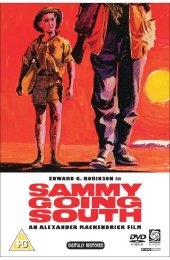
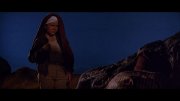


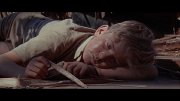
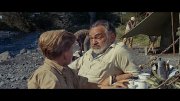
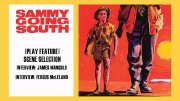
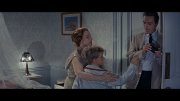


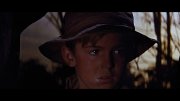
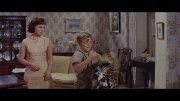
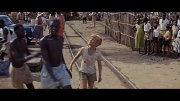










































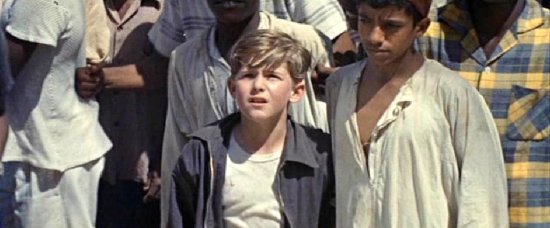
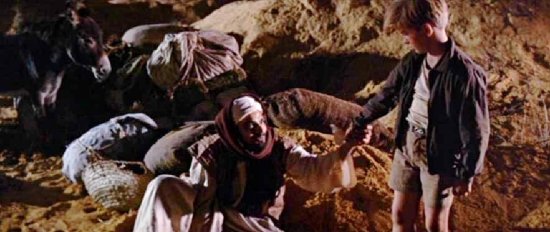
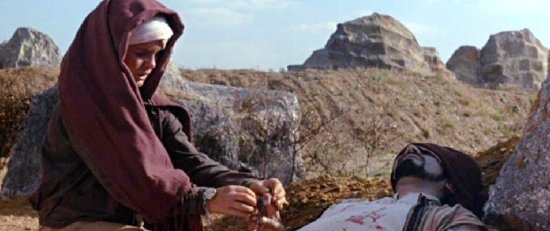

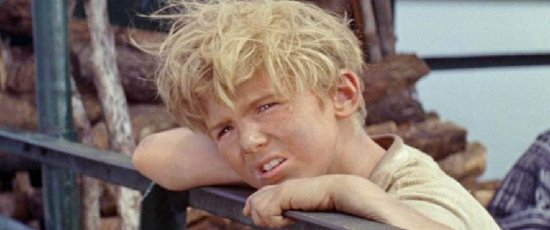
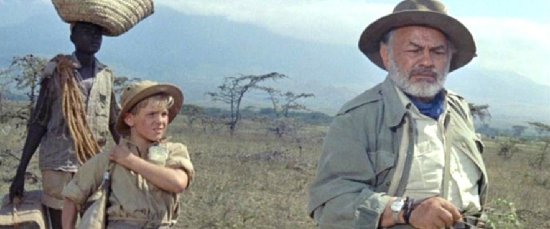
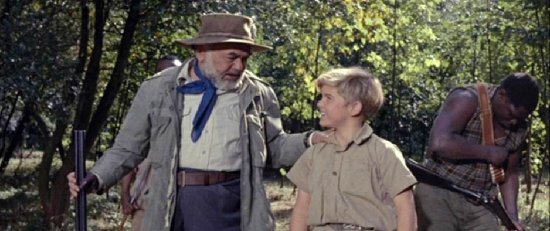
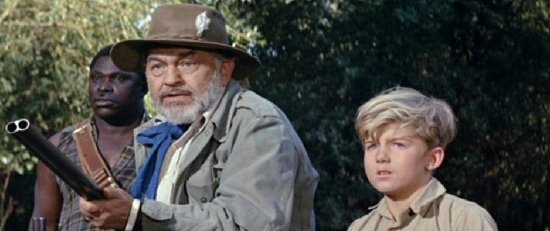
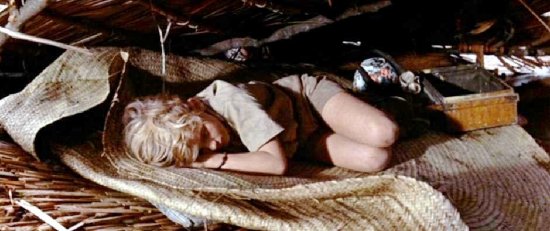
Your Opinions and Comments
Sammy's meeting with the Syrian who fancies him also mirrors something that happened to me in 1953 in my own childhood when I lived in Cheadle Heath, Stockport. In fact, if you exchange the embankment by the Cheadle Heath railway for the Egyptian sand dune; the Syrian for a middle aged Stockport Englishman; Sammy's being startled by his finding the Syrian watching him for my being startled by my discovery of the man watching me and the Syrian wanting carnal knowledge of Sammy with the man wanting carnal knowledge of me, it's almost like watching a scene from my childhood being played out on the screen...albeit in a different setting.
Also, like Sammy, I was wanderer when I was a little boy...although I never wandered as far as he did in the film.
He says:
"I went off to Africa a happy 11 year old child and returned 6 months later as a young man, buried in experiences with some of the best actors, and technicians of film in the world. Working with Alexander MacKendrick was amazing. Here was one of the most famous directors there was showing me how to perform. Behind the scenes I got to know Harry H. Corbett the star of Steptoe And Son and Edward G. Robinson in a way you don't from reading Hello magazine. The film inspired Lord Lloyd Webber and Steven Spielberg at the start of their careers. On Sunday, I will be sharing some of the exciting inside stories of what REALLY happens on a film set, the arguments, the disasters and finally the triumphs as the whole vision comes together into something that makes sense and carries a powerful message to an audience."
Get your tickets now! Call 0161 200 1500
I will keep my eye on your website and yes, I'm very pleased that new audiences will be able to experience it in the proper environment of a cinema, where it was meant to be shown in the first place. According to my old film despatch book from the cinema where I worked, the copy number of Sammy Going South that I ran in 1963 was number 27. Probably up to one hundred 35mm anamorphic prints were made at the time for UK distribution and, as far as I remember, we ran the 128 minute version back then. If they haven't all been incinerated by now, maybe...just maybe...one original print still exists somewhere and perhaps one day, it will be found.